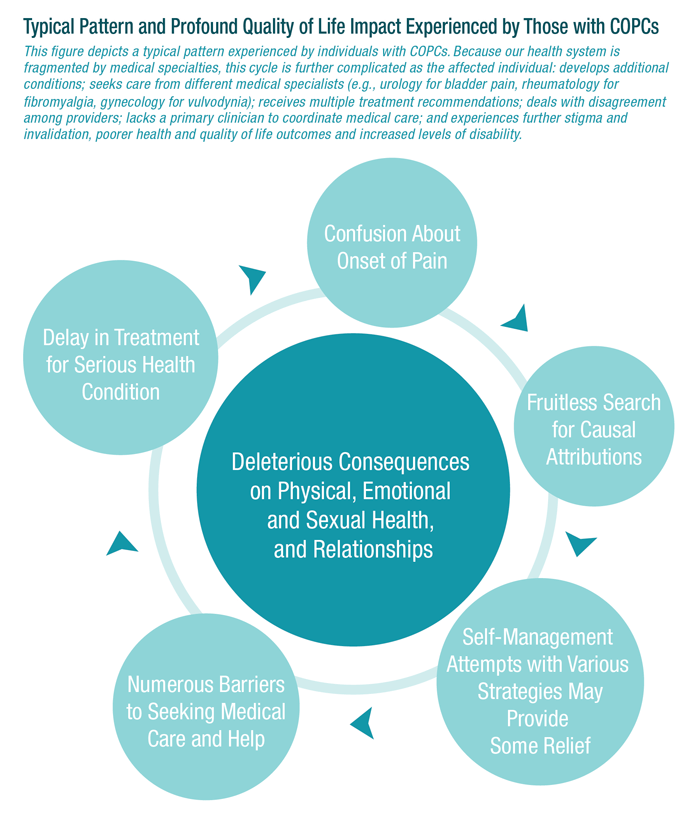
COPCs – Impact on Health and Quality of Life
Chronic Overlapping Pain Conditions (COPCs) have a profound impact on all aspects of one’s health and quality of life. And they come at a high cost to those affected by them and their loved ones, our health care system and society at large.
Because the federal government invests just $2.27 per affected person in COPCs research, we know very little about the understanding causes and mechanisms of COPCs. As a result:
- Patients are frequently misdiagnosed due to inadequate training of health care providers
- There are very few treatments approved as safe and effective by the Food and Drug Administration
- Scientific evidence to guide clinicians and patients in making informed treatment decisions is insufficient
As a result, research shows that individuals with COPCs experience a significant delay in accurate diagnosis and effective treatment, which can lead to a vicious cycle with serious consequences, including:
- worsening of local and systemic symptoms;
- decreased treatment efficacy;
- poorer health outcomes;
- diminished quality of life; and
- increased disability.
A number of studies substantiate the profound impact that COPCs have on all aspects of one’s health and quality of life. This figure depicts the typical pattern experienced by those with COPCs. Because our health care system is fragmented by medical specialties, this cycle is further complicated as individuals with COPCs:
- Develop additional pain conditions
- Seek care from different medical specialists (e.g., urology for bladder pain, rheumatology for fibromyalgia)
- Receive multiple treatment recommendations
- Deal with disagreement among health care providers
- Lack a primary clinician to coordinate medical care
- Experience further stigma and invalidation, poorer health and quality of life outcomes and increased levels of disability

Share:
